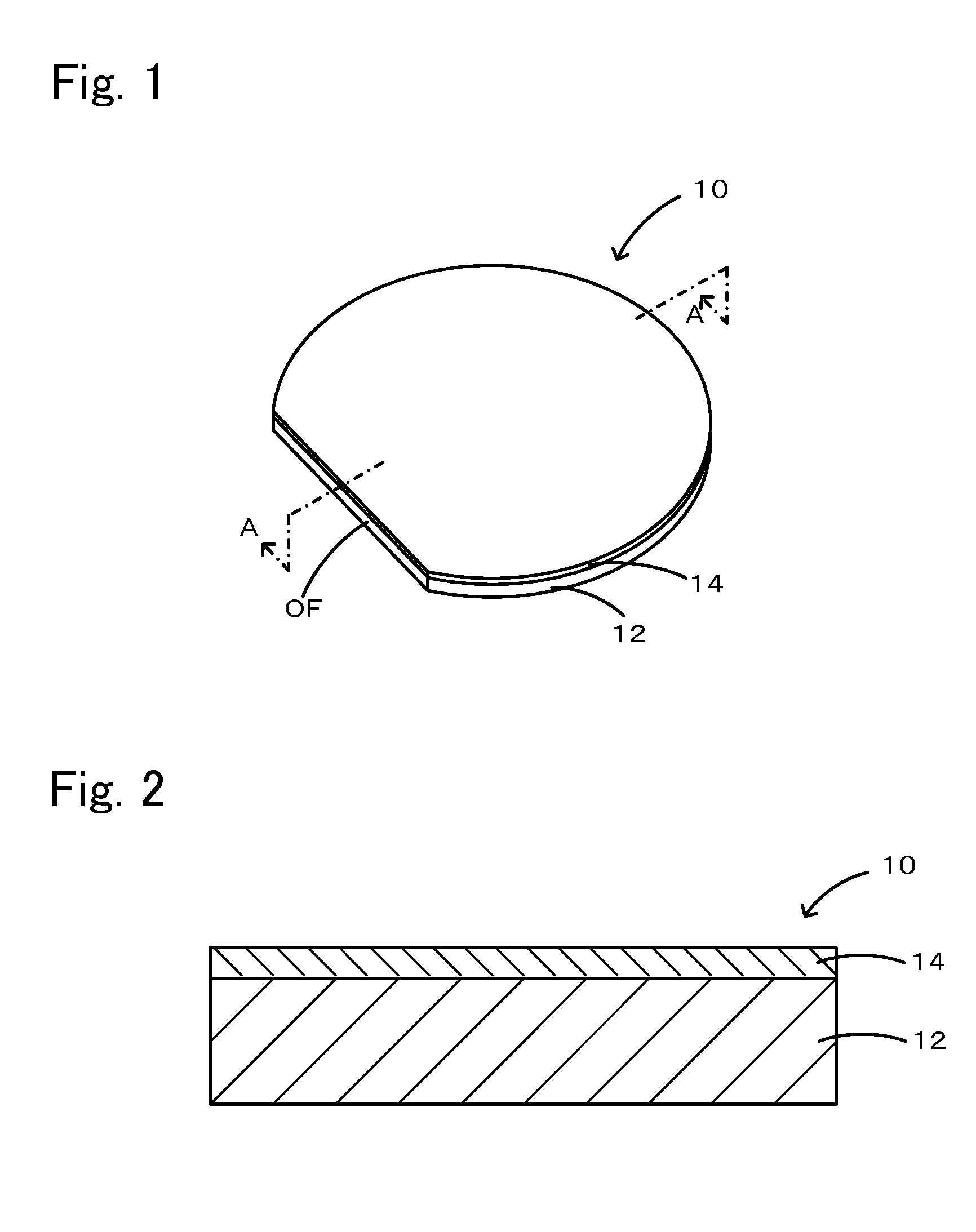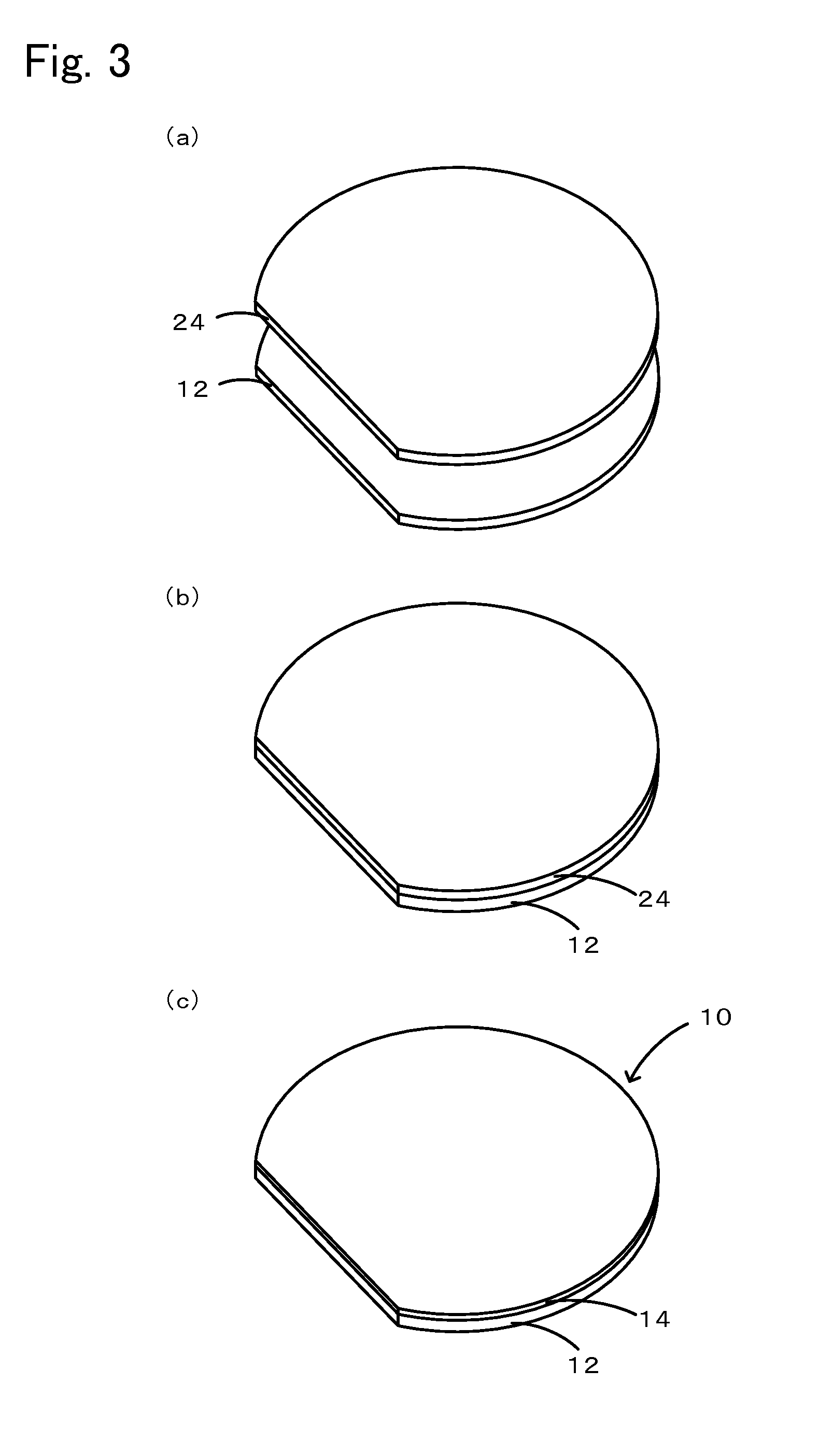Composite Wafer and Method for Manufacturing the Same
- Summary
- Abstract
- Description
- Claims
- Application Information
AI Technical Summary
Benefits of technology
Problems solved by technology
Method used
Image
Examples
example
Example 1
[0046]First of all, a translucent alumina substrate used as a supporting substrate was prepared by the process described below. First, a slurry was prepared in which components shown in Table 1 were mixed. The α-alumina powder used had a purity of 99.99%, a specific surface of 3.5 to 4.5 m2 / g, and an average primary particle size of 0.35 to 0.45 μm.
ComponentsPart by weightRaw materialAl2O3(α-alumina powder)100powderMgO(Magnesia)0.050ZrO2(zirconia)0.040Y2O3(yttria)0.0030Disperse mediumDimethyl glutarate27Ethylene glycol0.3Gelling agentMDI resin4DispersantHigh molecular surface-active agent3CatalystN,N-Dimethylamino hexanol0.1
[0047]The slurry was poured into a mold made of an aluminum alloy at room temperature and then left standing at room temperature for one hour. Next, it was left standing at 40° C. for 30 minutes to cause solidification to proceed and then released from the mold. Furthermore, the solidified slurry was left standing at room temperature and at 90° C., each...
example 2
[0052]Using the slurry employed for producing the polycrystalline translucent alumina substrate of Example 1, a polycrystalline translucent alumina substrate was produced by the same procedure as that of Example 1 except that firing was performed once at a firing temperature of 1,700° C. The total light transmittance from the front was measured on the resulting polycrystalline translucent alumina substrate without grinding the surface. As shown in FIG. 4, the total light transmittance from the front was less than 70% at the visible light wavelength (measurement wavelength: 555 nm), but was high at 70% or more at a wavelength of 200 to 250 nm. The average grain size of the translucent alumina substrate was 12 μm. The translucent alumina substrate was ground to a thickness of 0.6 mm as in Example 1. The linear transmittance in the visible light range of the substrate was measured to be 30% (measurement wavelength: 555 nm). Furthermore, the tan δ was 10−5, the volume resistivity was 10...
PUM
 Login to View More
Login to View More Abstract
Description
Claims
Application Information
 Login to View More
Login to View More - R&D
- Intellectual Property
- Life Sciences
- Materials
- Tech Scout
- Unparalleled Data Quality
- Higher Quality Content
- 60% Fewer Hallucinations
Browse by: Latest US Patents, China's latest patents, Technical Efficacy Thesaurus, Application Domain, Technology Topic, Popular Technical Reports.
© 2025 PatSnap. All rights reserved.Legal|Privacy policy|Modern Slavery Act Transparency Statement|Sitemap|About US| Contact US: help@patsnap.com



